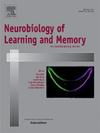Sensitivity of associative priming to semantic relations: Insights from behavior and event-related potentials
IF 2.2
4区 心理学
Q3 BEHAVIORAL SCIENCES
引用次数: 0
Abstract
The priming effects have raised significant concerns. Previous research has solely focused on the priming of individual items, where both the prime and the target are single items. This study innovatively examines the priming effect for pairs and also considers the pair type for the target. In this experiment, the semantic relations of the prime and target pairs were categorized into thematic, taxonomic, and unrelated cases. The prime pairs were considered new, while the target pairs consisted of intact, rearranged, and “old + new” pairs. Behaviorally, we found that the priming effects were more pronounced when considering thematic relations compared to taxonomic relations. This indicates a stronger unitization between the items in taxonomic relations. Neurally, the N300 and N400 amplitudes were significantly larger for thematic relations compared to taxonomic relations. These results suggest that both object identification and semantic processing were more influenced by the semantic relation within the pairs. Moreover, we observed that the pair type exhibited distinct patterns in the ERP priming effect across different semantic relations. This indicates that semantic priming and repetition priming of associative pairs result in different effects.
联想启动对语义关系的敏感性:来自行为和事件相关电位的见解
启动效应已经引起了重大关注。以前的研究只关注单个项目的启动,其中启动和目标都是单个项目。本研究创新性地考察了配对的启动效应,并考虑了目标的配对类型。本实验将启动词对和目标词对的语义关系分为主格、分类格和不相关格。素数对被认为是新的,而目标对由完整的、重新排列的和“旧+新”对组成。在行为上,我们发现当考虑主题关系时,启动效应比考虑分类关系时更为明显。这表明在分类学关系中,项目之间具有较强的统一性。在神经学上,主题关系的N300和N400振幅显著大于分类关系。这些结果表明,对象识别和语义加工都更受语义关系的影响。此外,我们还观察到,在不同的语义关系中,配对类型在ERP启动效应中表现出不同的模式。这说明联想对的语义启动和重复启动产生了不同的效应。
本文章由计算机程序翻译,如有差异,请以英文原文为准。
求助全文
约1分钟内获得全文
求助全文
来源期刊
CiteScore
5.10
自引率
7.40%
发文量
77
审稿时长
12.6 weeks
期刊介绍:
Neurobiology of Learning and Memory publishes articles examining the neurobiological mechanisms underlying learning and memory at all levels of analysis ranging from molecular biology to synaptic and neural plasticity and behavior. We are especially interested in manuscripts that examine the neural circuits and molecular mechanisms underlying learning, memory and plasticity in both experimental animals and human subjects.

 求助内容:
求助内容: 应助结果提醒方式:
应助结果提醒方式:


